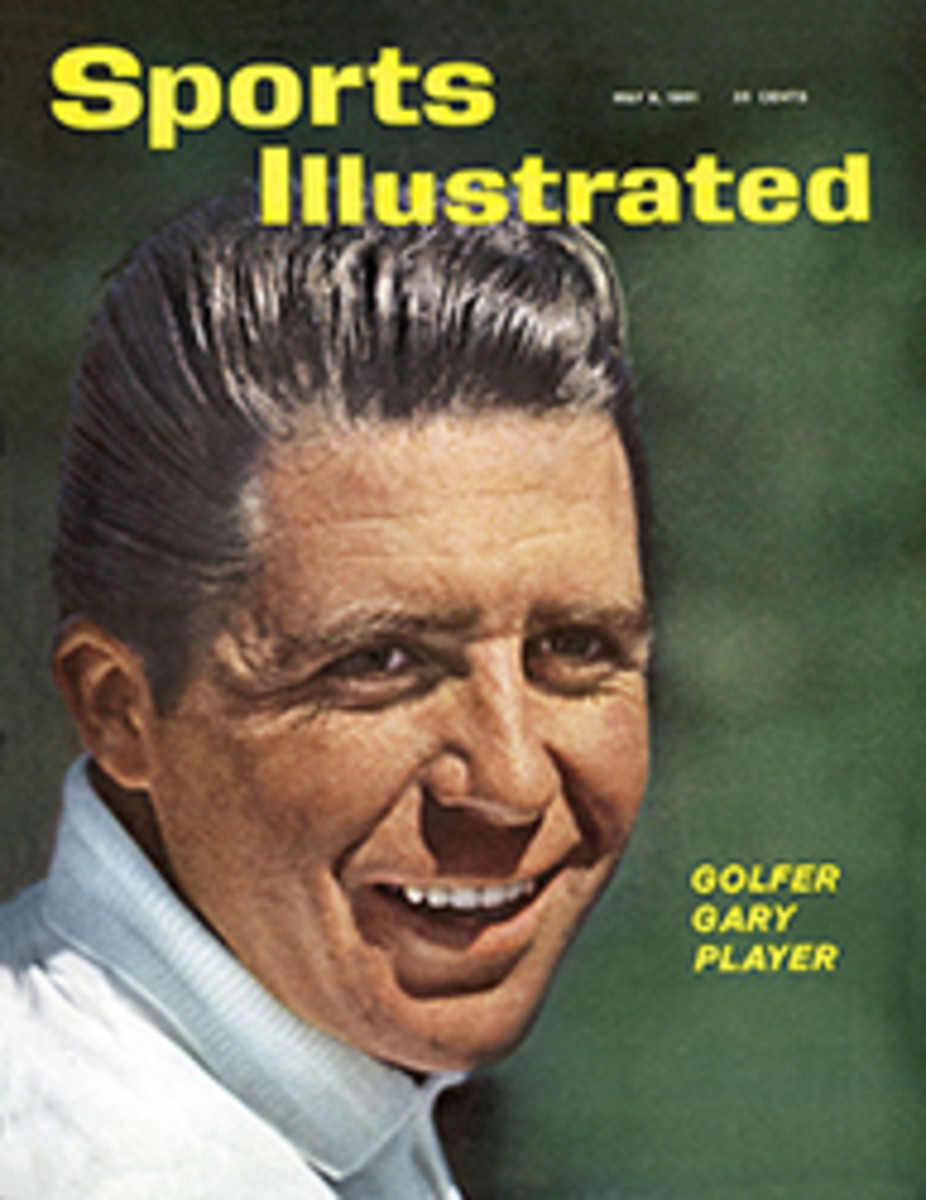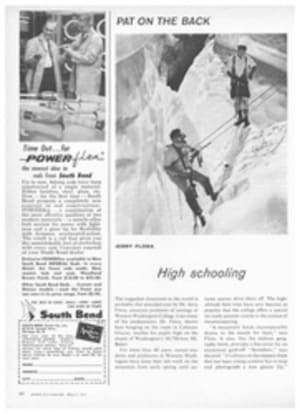
The Design Award winners
Emilio Pucci, theItalian marchese who gave the international set its uniform of Pucci pants,Pucci shirts and Pucci silk-knit dresses, and Jeanne Essig, a New York designerwhose coordinated sports clothes sell at modest prices, are the winners of thesixth annual SPORTS ILLUSTRATED Design Awards. More than 500 retailers andfashion writers voted in the annual competition. Pucci will receive theSporting Look Award and Miss Essig the Designer of the Year Award at a ceremonyin New York June 8.
Pucci, the firstforeign sportswear designer to be honored, is as colorful a personality asanyone working in the field of fashion. The scion of a Florentine family thatdates back to Renaissance Italy, he has created clothes that are worn all overthe world. Women who buy one Pucci garment usually become collectors of them,particularly the tight tapered pants that he introduced in dozens of colors andfabrics. They combine the pants with the brilliantly patterned silk shirts thatalso are a Pucci specialty.
The current rageof Pucci collectors is a silk jersey tube dress that weighs only ounces and canbe folded up to handkerchief size. According to Lord & Taylor, one ofPucci's biggest retail outlets in the U.S., many women own. 12 to 15 of thesedresses (they sell for about $100) and wear them as a status symbol ofinternational travel.
Pucci'ssuccess—he grosses about $3 million a year—can be accounted for in part by thefact that his designs are simple and, once they are established, don't change.Pucci's way of fitting tapered pants made them feminine and flattering. He feltthat the feminine hipline was neglected in fashion, and developed a girdle thatlifted, instead of flattening, the buttocks. Pucci feels that this girdle, madeby a U.S. company, should be worn with Pucci pants and with his form-revealingknitted dresses. His newest interest is stretch fabric, of the sort used forhis "capsulas," one of which is shown at left. "These are thefabrics of the future," Pucci says.
A gentlertrend
The famous shockcolors—pink, turquoise, acid greens—that Pucci introduced to the sportswearworld in the past decade are now softening into muted pinks and grays. His boldgeometric prints are gentling into blocks of color separated by curving,entwined lines. Pucci's new romanticism is based on a conviction that mankindhas had a surfeit of perfect mechanical forms. "When a man has seen theaerodynamic shape of a Caravelle jet at an airport," he says sardonically,"he doesn't need aerodynamic furniture."
The marchesc wasone of Italy's most highly decorated pilots in World War II, is a crack skierand a sports car enthusiast. Pucci's friends believe that he is stronglyinfluenced by his wife, Cristina, whom he married in 1959. She is a handsomeblonde, who presented him with a son 15 months ago and is now expecting asecond child.
Designer JeanneEssig, whose clothes are produced by a sportswear firm in New York calledMajestic Specialties, Inc., operates in the hurly-burly of Seventh Avenue buthas a cool and collected approach to design that is not unlike Pucci's. MissEssig is the darling of American retailers and of the customer who likes to puttogether her own look in sports clothes. The Essig designs are simple anduncluttered, and can be worn in almost endless combinations of the wearer's ownchoice.
To provideretailers and customers with the variety of clothing types and weights neededfor different seasons and climates, Miss Essig produces five differentcollections a year, with 150 pieces in each colection. The ingredients sheprovides include sweaters, skirts, blouses, pants, shorts, jackets, coats,playsuits, play-dresses and even such specialized designs as tennis dresses. Asweater in an Essig collection is designed to go with any one of five differentskirts, three different pairs of pants and the tennis dress.
Until she startedworking with Majestic in 1953 all of these items were produced by differentmanufacturers and the job of putting complete outfits together was left to thedepartment store buyer and the women who wanted to wear them. Now Majestic'scoordinated groups are carried in 3,000 stores, and the firm is listed on theAmerican Stock Exchange as doing a volume of $22 million a year. Miss Essig isvice-president of the firm in charge of design—one of the few designers in NewYork's garment industry to have this distinction.
Designer Essig isa composed woman who is married to George Breitbart, a New York psychiatrist.They have two sons, John, 8, and Douglas, 5. The family lives in a comfortable,sprawling apartment in New York's Greenwich Village. Miss Essig goes to workevery day at 10 and is home with her husband and children again by 6. In thislast respect she differs sharply from Pucci, who—though a devoted familyman—moves constantly from continent to continent in a continuing search forfashion ideas and inspirations.
TWO PHOTOS
EMILIO PUCCI, who works in his family's thousand-year-old Palazzo styles at international ski and sun resorts. At right: a modern Roman Pucci in Florence, creates travel and sports clothes for women who set models one of Pucci's "capsulas," which is made of stretch fabric.
TWO PHOTOS
JEANNE ESSIG, designer for Majestic, plans multitudes of separates from which women can assemble their own wardrobes. Below: a model shows typical Essig design, a clean-lined playsuit.

